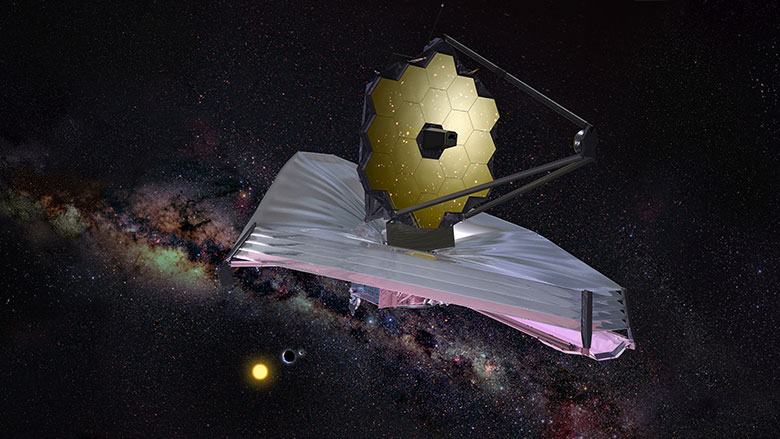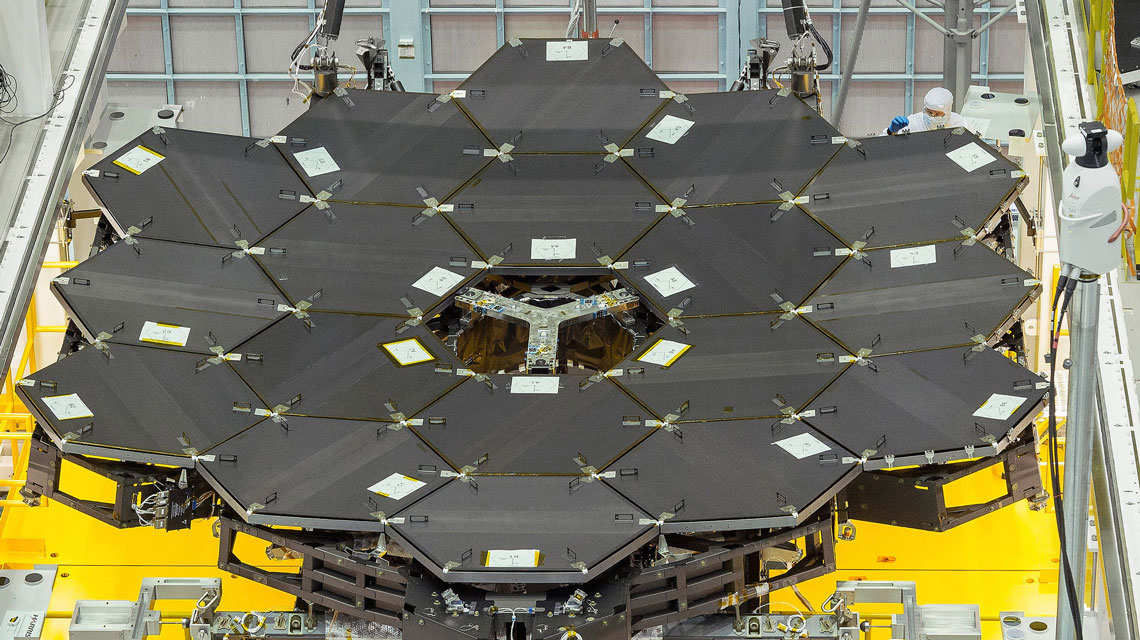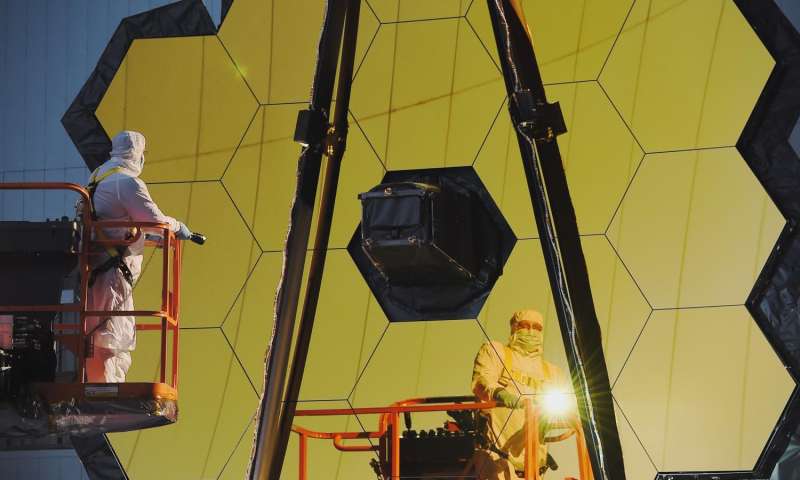NASA Completes Preliminary Mirror Tests by James Webb

Telescope "James Webb" in the representation of the artist
The James Webb Space Telescope is an orbital infrared observatory. According to its developers, the telescope can replace another system - the Hubble, after the end of its life. The capabilities of the new orbital telescope are much wider than those of the Hubble.
According to the plan, “James Webb” should have a composite mirror with a diameter of 6.5 meters. At Hubble, the mirror diameter is 2.4 meters. Now the main mirror of the telescope is ready, and engineers and technicians have completed its preliminary tests. NASA reports that the tests were successful.
The inspection of the mirror is an extremely important procedure, the field of which the telescope proceeds to the next stage. In tests, experts simulate external factors that can damage the structure. This is a strong sound and vibration that will affect the system when a telescope is launched into space on a booster rocket. Sending it to orbit is a difficult stage, during which failure of even a small telescope element can lead to complete or partial disrepair of the observatory upon its arrival at the calculated position.
')

Of course, the engineers created the design in such a way that it was able to endure these negative factors. But it is necessary to check the stability of the telescope several times so that the situation does not begin to develop in an unforeseen direction.
“The check will show whether any damage to the optical system has occurred after the test,” said Ritva Keski-Kuha, head of the telescope's tests at the Goddard Space Flight Center, GSFC.
In order to carry out the necessary test work, optics specialists installed an interferometer - the main device, which allows to determine the characteristics of the telescope mirror with very high accuracy. Telescope mirrors should be perfectly smooth. For engineers, the task of measuring the parameters of a mirror is complicated by the fact that direct contact with the mirror is not allowed. Otherwise, micro-scratches may appear on the surface of the mirror, which will affect the overall performance of the device.
Direct contact is not required, since the interferometer removes this need. The device allows to fix the slightest changes in the arrangement of the elements of the composite mirror and the characteristics of its surface. The interferometer emits light waves of various lengths, and then the experts measure with its help the characteristics of the reflected rays.

A technical team is checking the telescope's main mirror at NASA's Goddard Space Flight Center (Source: NASA / Chris Gunn)
Measurements of such accuracy require specific conditions in the room where the inspection is carried out. Temperature and humidity are maintained at the same level in order to reduce the possible errors in the measurements. The interferometer used in the test takes readings 5,000 times per second, which is higher than the frequency of the background vibration. This allows scientists to avoid additional errors, obtaining accurate results. Then they are compared with the ideal parameters obtained using a computer model.
“The previous four years can be called preparation for the current test,” says David Cheney, chief specialist in metrology of mirrors at the Goddard Space Flight Center. “We measure the size of the main mirror, the radius of its curvature, the background noise. Our test is so sensitive that we record changes in the characteristics of the mirror, even when people talk indoors. ”
Now the data is analyzed by the team, which wants to make sure that the mirrors are placed and work exactly as required by the project. Then basic tests will be carried out, after which scientists will be able to verify that the telescope is suitable for work in space.

Engineers conduct preliminary telescope tests in a special room at the Goddard Space Flight Center
At the moment, this telescope is the largest and most sensitive of all orbital observatories. The main task of James Webb is to detect the light of the first stars and galaxies that were formed immediately after the Big Bang. Also, the telescope will conduct a study of the formation and development of galaxies, stars, planetary systems and the origin of life. The data obtained by the telescope will help scientists understand when and where in the Universe reionization began and what caused it.
According to the plan, the telescope will be launched using the Ariane-5 rocket in October 2018. If everything goes as it should, the orbital observatory will be able to start work already in April 2019.
Source: https://habr.com/ru/post/369839/
All Articles